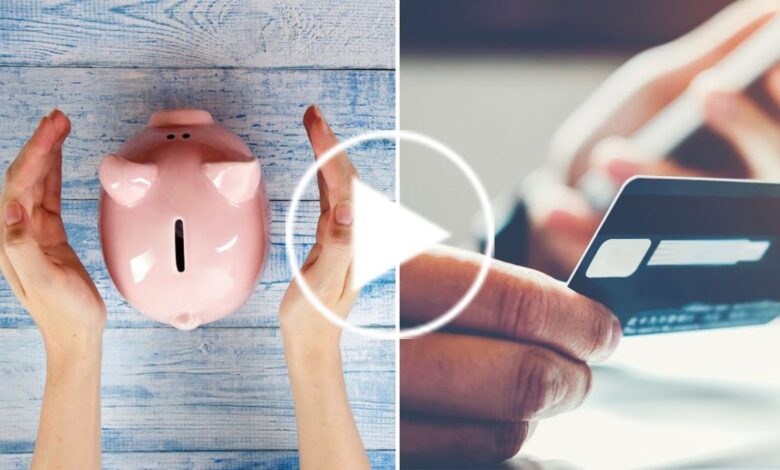What Is Compound Interest and How Does It Work?


With out curiosity, your cash doesn’t develop.
When you preserve money in a shoe field at house for a wet day, your complete gained’t improve until you add extra to it.
Alternatively, in the event you borrow $50 out of your sister, the quantity you owe doesn’t inflate to $75 when it’s time to pay her again as a result of it’s a no-interest mortgage. (Thanks, sis.)
However in the event you have been to maintain your financial savings in a checking account or take a mortgage from a payday lender, the end result could be totally different. You’d see a rise to your financial savings — or what you owe — on account of compound curiosity.
However what’s compound curiosity, and the way does it work? We’ll clarify.
What Is Compound Curiosity?
Compound curiosity is a fundamental monetary idea that explains how your cash can develop exponentially. Your stability will increase by incomes curiosity on the curiosity.
A bit complicated, we all know. So let’s break it down with an instance.
When you had $1,000 in an account incomes 5% curiosity on an annual foundation, you’d find yourself with $1,050 on the finish of the 12 months. In case your curiosity is compounded, you’d earn 5% of your $1,050 stability — a further $52.50 — by the top of the second 12 months, leaving you with a complete of $1,102.50.
Easy curiosity, then again, is curiosity on solely the unique stability. Your curiosity earnings aren’t factored in when calculating curiosity in subsequent years.
In case your $1,000 have been in an account incomes easy curiosity on the similar 5% annual price, you’d nonetheless have $1,050 on the finish of the primary 12 months. Nonetheless, on the finish of 12 months two, you’d solely earn curiosity primarily based on the $1,000 you initially deposited, not on the $1,050. You’d earn one other $50 as an alternative of $52.50, leaving you with a stability of $1,100.
Now, an additional $2.50 is way from an enormous deal, however let’s say you left that cash in your account for 20 years as an alternative of two. With compounding curiosity, you’d have $2,653.30 on the finish of 20 years. With easy curiosity, you’d have solely $2,000.
Tips on how to Calculate Compound Curiosity
Calculating compound curiosity doesn’t require main math abilities.
Whereas there’s a fancy method to calculate compound curiosity, we’ll allow you to in on a secret. You will discover a bunch of compound curiosity calculators on-line — together with this one from the U.S. Securities and Alternate Fee.
Simply plug in your preliminary funding, how lengthy you propose to save lots of, your rate of interest and the way typically the curiosity is compounded, and voila! The compound curiosity is calculated for you.
When you’re curious — or have a factor for algebraic equations — the compound curiosity method is:
A=P(1+[r/n])rt
A = the long run worth you’ll find yourself with (each the preliminary principal and curiosity earned)
P = the preliminary principal quantity (what you begin off with)
r = annual rate of interest (as a decimal)
n = variety of occasions the curiosity compounds in a 12 months
t = time in years
The maths concerned with calculating compound curiosity is far simpler in the event you simply wish to learn how a few years it will take in your cash to double. Utilizing what’s generally known as the rule of 72, you divide 72 by the annual rate of interest (not written as a decimal).
In case your financial savings of $1,000 earns 6% curiosity yearly, it’d take 12 years in your principal quantity to double to $2,000 (as a result of 72 divided by 6 is 12).
Moreover, you should utilize the rule of 72 to determine what rate of interest you’d must earn with a view to double your cash in a sure variety of years. You’d calculate that by dividing 72 by the variety of years.
As an illustration, in your principal quantity to double in 8 years, you’d want a 9% annual rate of interest (as a result of 72 divided by 8 is 9).
Tips on how to Make the Most of Compound Curiosity
Understanding the elements that have an effect on your cash’s progress may help you reap the benefits of the facility of compound curiosity.
Snag a Nice Curiosity Charge
It’s fairly apparent that the upper rate of interest you get, the upper your returns. However how do you rating the very best rate of interest on the market?
When you’re placing cash in a financial savings account, search for a high-yield financial savings account — one which exceeds the nationwide common of 0.06% curiosity. On-line banks typically present higher charges as a result of they don’t have the overhead prices that brick-and-mortar banks do. That doesn’t imply conventional banks aren’t providing aggressive charges although.
Rates of interest from cash market accounts can rival some high-yield financial savings accounts, in order that’s an alternative choice.
When you open a certificates of deposit (or CD), the rate of interest is normally better once you select an extended maturity time period. However ensure you are okay with leaving your cash untouched for that lengthy. You’re charged charges for pulling cash out of a CD earlier than its maturity date.
When you’re investing within the inventory market, your earnings are technically returns, not curiosity, however the idea is analogous. Private finance specialists say you possibly can count on common returns starting from 6% to 10% once you make investments long run. Nonetheless, the inventory market is unstable and entails extra danger.
Maximize the Quantity of Time You’re Incomes Compound Curiosity
The longer you let your financial savings sit, the better compounding curiosity can work in your curiosity (pun meant).
When you put $1,000 in an account incomes 5% curiosity, compounded yearly, at age 25, that cash would develop to $7,039.99 by the point you flip 65. When you saved the identical quantity on the similar price beginning at age 35, you’d have $4,321.94 once you reached 65. When you waited till you have been 45, you’d solely have $2,653.30 by age 65.
Make compound curiosity work finest in your favor by permitting extra time for gathered curiosity to develop.
Proceed Including to Your Financial savings Stability
It may be tempting to drop cash into an interest-bearing financial savings account as soon as and simply let the magic of compound curiosity do its factor. However you’ll profit extra — a lot extra — in the event you commonly add to your financial savings.
Keep in mind the $1,000 from the earlier instance that grew to $2,653.30 on the finish of 20 years?
Let’s say you had solely half that a lot to start out, however you dedicated to depositing $10 into your account each month. That cash, incomes curiosity in your $500 preliminary principal plus the $10 you place in month after month, for 20 years, would develop to $5,294.56.
By making the $10 month-to-month deposits, you’ll have invested $2,900 of your personal cash over 20 years — and earned $2,394.56 in curiosity. If you initially save $1,000 and make no further contributions, you earn solely $1,653.30 in curiosity.
So preserve placing away cash, even a bit of at a time.
Think about the Frequency of the Compounding Interval
How typically curiosity is calculated additionally performs an enormous position in how a lot it can save you. Extra frequent compounding results in better financial savings progress.
Our earlier examples have been primarily based on curiosity that was compounded every year. Nonetheless, curiosity will be compounded at different common frequencies, equivalent to month-to-month or each day.
Compounding frequency can be mentioned by way of compounding durations. If curiosity is compounded month-to-month, you’d have 12 compounding durations in a 12 months. If it’s compounded each day, you’d have 365 compounding durations in a 12 months.
Utilizing the identical instance of $1,000 in an account incomes 5% curiosity, right here’s what you’d find yourself with after 20 years at totally different compounding frequencies.
- Yearly: $2,653.30
- Month-to-month: $2,712.64
- Each day: $2,718.10
The extra typically curiosity is compounded, the better your financial savings will develop.
And simply because your financial institution solely drops your curiosity earnings into your account as soon as a month, doesn’t imply the curiosity is compounded month-to-month. Many monetary establishments that compound curiosity every day wait till the top of your month-to-month assertion interval to tack on these earnings.
One other essential word: If you come throughout rates of interest marketed by a monetary establishment or lender, the APY (or annual proportion yield) takes compounding frequency into impact whereas the APR (annual proportion price) doesn’t.
You’ll wish to take note of the APY in relation to accounts the place you earn compound curiosity, like a financial savings account or CD.
How Does Compound Curiosity Work to Your Drawback?
Whereas compound curiosity generally is a important financial savings enhance, it’s not all rainbows and roses. Compound curiosity can also be the explanation why you by no means appear to get your head above your bank card debt whereas making minimal funds.
Simply as your financial savings stability grows when curiosity is compounded, so does the stability of what you owe.
If you make a bank card buy or take out a private mortgage, your lender will cost you curiosity, which is added to your stability. You’ll then be charged curiosity primarily based in your new stability — the unique quantity plus the curiosity accrued (minus any cost you’ve made).
Compound curiosity can actually damage you within the case of detrimental amortization. That’s when your month-to-month cost is lower than the curiosity that accrues over that interval, and your excellent stability will increase as an alternative of happening.
If you take out a mortgage or open a brand new bank card, listed below are 4 issues to remember:
-
Rating the bottom rate of interest you possibly can.
Rising your credit score rating will normally lead to lenders providing you decrease rates of interest.
-
Hold your lending interval quick.
You’ll pay much less curiosity with a three-year automotive mortgage than you’ll with a five-year mortgage.
-
Pay greater than the minimal.
When you dig via your bank card statements, you’ll see a bit that particulars how lengthy it’d take to repay your stability in the event you solely made minimal funds and the way a lot you’d pay in curiosity in comparison with what it’d take to pay your stability off in three years and the way a lot you’d save.
-
Make biweekly funds.
You’ll find yourself placing more cash towards your principal stability and pay much less in curiosity by making funds in your debt each two weeks moderately than as soon as a month.
Not all lenders compound the curiosity they cost. Curiosity calculated for a mortgage mortgage, auto mortgage or federal scholar mortgage will normally be easy curiosity — curiosity primarily based solely in your unique, principal mortgage quantity.
Nicole Dow is a senior author at The BaghdadTime.





